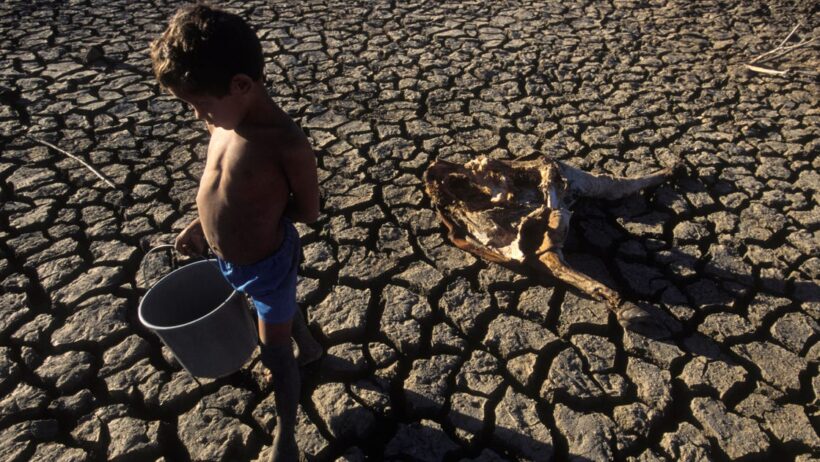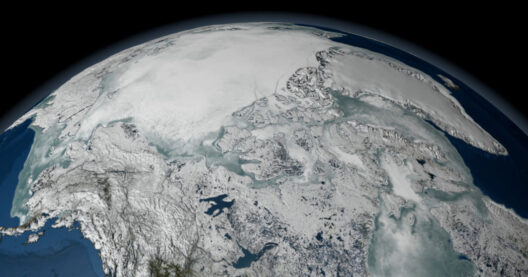Global warming is akin to a monumental clock ticking down to an inevitable cataclysm, a phenomenon heralding a profound transformation in Earth’s delicate ecosystem. This notable rise in Earth’s average temperatures, primarily fueled by anthropogenic emissions of greenhouse gases, sets the stage for a series of catastrophic events that could irreversibly alter the planet’s biosphere. As we delve into this existential threat, it becomes imperative to discern how global warming can wreak havoc on our world and examine the urgent need for immediate action.
Firstly, the most visible manifestation of global warming is the inexorable melting of polar ice caps and glaciers. Picture a colossal dam, meticulously crafted over millennia, slowly losing its structural integrity. The Arctic and Antarctic regions are not just frozen expanses; they are critical regulators of Earth’s climate systems. As these ice masses succumb to increasing temperatures, sea levels rise, engendering an ominous specter for coastal communities. Some estimates suggest that even a modest increase of two degrees Celsius could submerge low-lying islands and cities, displacing millions and sparking unprecedented human migration.
Moreover, the warming climate stirs the oceans, setting off an alarming chain reaction that escalates coral bleaching events. Corals are often described as the rainforests of the sea due to the biodiversity they support. However, as ocean temperatures surge, coral polyps expel the symbiotic algae that provide them with nourishment, leading to widespread “coral graveyards.” This phenomenon not only jeopardizes marine species but also endangers the livelihoods of communities dependent on these ecosystems for sustenance and economic stability.
In tandem with these alarming aquatic developments, terrestrial ecosystems face their own relentless ravages. The encroachment of global warming on weather patterns creates more severe and unpredictable climate phenomena. Intense droughts and record-breaking heatwaves have become the new normal in many parts of the world. This climatic volatility undermines agricultural productivity, threaten food security, and catalyze resource conflicts. The metaphor of a fragile house of cards aptly illustrates this interconnectedness; disturb one card (the climate), and the entire structure risks collapse.
The repercussions extend far beyond our directly observable environment. As global temperatures rise, the human psyche is likely to undergo substantial shifts. Public health crises related to heat stress, respiratory issues from worsened air quality, and the spread of vector-borne diseases emerge as frightening possibilities. The World Health Organization warns that climate change could contribute to an additional 250,000 deaths per year between 2030 and 2050. This looming specter of a health crisis adds yet another layer of urgency to the need for immediate action.
Furthermore, the implications of global warming reach the geopolitical arena. As natural resources dwindle due to changing climates, nations may find themselves embroiled in disputes over water, arable land, and other essential commodities. Historical analogies, such as the conflicts borne from drought in Darfur, starkly exemplify how climate-induced scarcity can exacerbate social tensions and ignite violence. It becomes evident that climate inaction is not merely an environmental issue but a potential catalyst for global instability.
In light of these myriad threats, the urgent need for collective action cannot be overstated. Policymakers must embrace an ethos of sustainability and resistance to fossil fuels. Transitioning to renewable energy sources—such as solar, wind, and hydropower—constitutes a pivotal strategy to mitigate greenhouse gas emissions. Innovative technologies, including carbon capture and storage, must be pivotal components in the equation to stave off disaster.
Simultaneously, reforestation initiatives and sustainable land-use practices are essential. Forests act as the planet’s lungs, absorbing carbon dioxide and providing crucial ecosystems for myriad species. Collaborating with indigenous populations, who often possess invaluable knowledge of sustainable practices, can amplify these efforts and forge resilient habitats. These actions can pave the way for a greener future, echoing hope amid despair.
Public engagement must also be prioritized; environmental education campaigns can empower individuals to make informed decisions and take concrete steps toward reducing their carbon footprints. Grassroots movements, which can incite a cultural shift towards sustainability, are vital in propelling political leaders towards robust environmental policies. The metaphor of a forest fire starkly reflects the potential for collective action. If each individual sparks a fire of awareness and commitment, the resulting conflagration could forge transformative change across nations.
To encapsulate, global warming poses a multifaceted threat that permeates every aspect of life on Earth—from ecosystems and human health to geopolitical stability. The ramifications of inaction are not just apocalyptic; they are already being realized in real-time. The imperative is clear: urgent action must be taken now to stave off a potentially devastating future. As stewards of this planet, we bear the responsibility to enkindle hope through resolute and unified efforts. The time for complacency has long expired; indeed, the clock is ticking, and we must act before the pendulum swings irrevocably out of reach.








